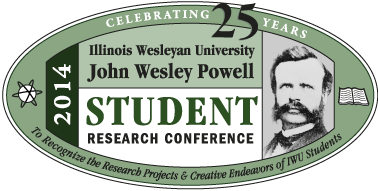Submission Type
Event
Expected Graduation Date
2014
Location
Room E105, Center for Natural Sciences, Illinois Wesleyan University
Start Date
4-12-2014 10:00 AM
End Date
4-12-2014 11:00 AM
Disciplines
Spanish and Portuguese Language and Literature
Abstract
It has been observed by Illinois Wesleyan students enrolled in the Medical Spanish course that when translating for patients in a clinical setting one of the two situations can occur: 1) the Spanish-speaking patient will use terminology unrecognizable by the student when describing their conditions or symptoms; or 2) the student translator will use terminology taught in their Medical Spanish course to describe conditions, symptoms and treatment instructions, but the terminology is unrecognizable by the Spanish-speaking patients. This miscommunication between the translator and the patient can lead to lack of treatment adherence or improper diagnosis due to a misinterpretation of the information provided. The goal of this study is to try to identify words that Spanish-speaking patients commonly utilize when describing their medical conditions and symptoms or when receiving medical instructions in order to compare these to the words and phrases being taught to students participating in Medical Spanish courses. Patients who attend the Community Health Care Clinic in Normal, IL and require a translator during their appointments will be given an oral survey consisting of three parts: 1) Image identification; 2) Selecting the term that sounds correct or familiar; 3) Providing an oral description of a common medical condition. The results from this survey may provide concrete examples in which the formal medical terminology being taught in Medical Spanish classes and published in English-Spanish medical dictionaries does not match the colloquial terminology being used by patients in the doctor’s office, thus providing a possible explanation for the lack of understanding between translator and Spanish-speaking patient despite the fact both are communicating with each other in Spanish.
A Comparrision Between Formal Medical Spanish Terminology and the Terminology Used by Low-income Hispanics
Room E105, Center for Natural Sciences, Illinois Wesleyan University
It has been observed by Illinois Wesleyan students enrolled in the Medical Spanish course that when translating for patients in a clinical setting one of the two situations can occur: 1) the Spanish-speaking patient will use terminology unrecognizable by the student when describing their conditions or symptoms; or 2) the student translator will use terminology taught in their Medical Spanish course to describe conditions, symptoms and treatment instructions, but the terminology is unrecognizable by the Spanish-speaking patients. This miscommunication between the translator and the patient can lead to lack of treatment adherence or improper diagnosis due to a misinterpretation of the information provided. The goal of this study is to try to identify words that Spanish-speaking patients commonly utilize when describing their medical conditions and symptoms or when receiving medical instructions in order to compare these to the words and phrases being taught to students participating in Medical Spanish courses. Patients who attend the Community Health Care Clinic in Normal, IL and require a translator during their appointments will be given an oral survey consisting of three parts: 1) Image identification; 2) Selecting the term that sounds correct or familiar; 3) Providing an oral description of a common medical condition. The results from this survey may provide concrete examples in which the formal medical terminology being taught in Medical Spanish classes and published in English-Spanish medical dictionaries does not match the colloquial terminology being used by patients in the doctor’s office, thus providing a possible explanation for the lack of understanding between translator and Spanish-speaking patient despite the fact both are communicating with each other in Spanish.


